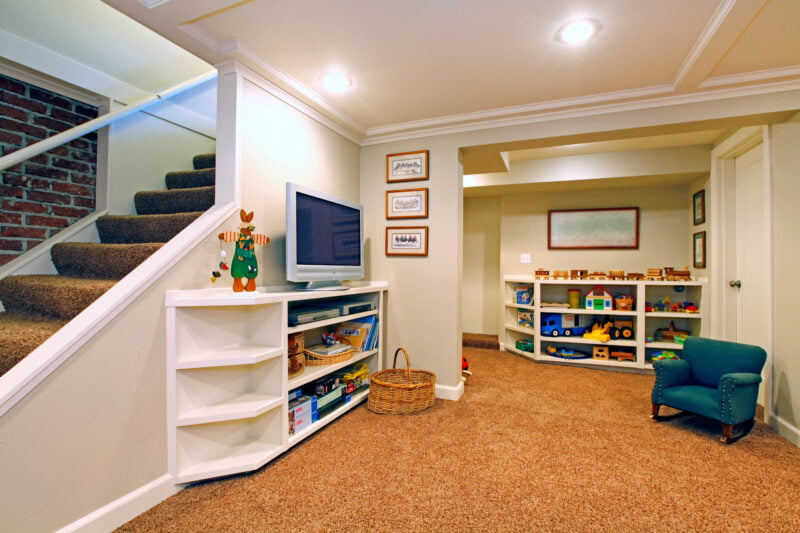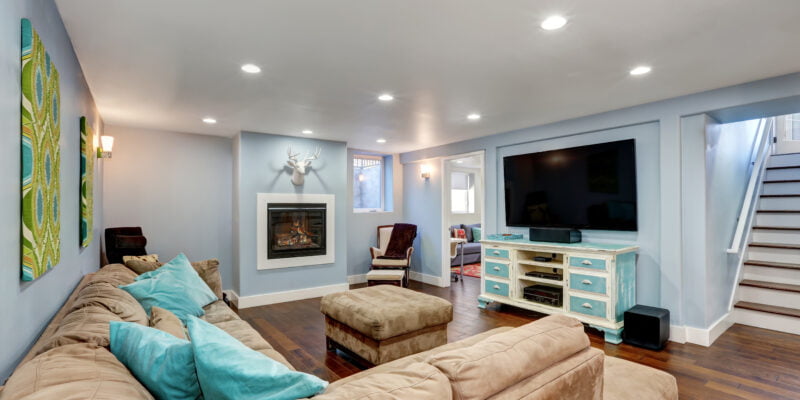At times, the basement is the most neglected space in a home. It’s often used only for storing items or for laundry. However, this room can be multifunctional when renovated and designed systematically.
Transforming the basement is one of the best solutions to add a functional area to your home. You may create an extra bedroom, a home theater, a game room, or even an art or music studio. It’s functional and flexible. Plus, remodeling it into more usable space can increase the value of your property.
Here’s how to transform your basement into additional living space.
1. Do An Initial Basement Inspection And Repair
Every renovation begins with inspection and repair. Determining the current condition of your basement will give you an idea of how much you’ll spend. You may do an initial check on your own or call experts from a basement remodel company to perform a thorough assessment and immediate repairs.
Hence, here are some issues to look at as you inspect.
- Mold And Mildew
Mold formation is typical in moisture-prone areas. Since the basement often lacks proper ventilation and sunlight, it can accumulate over time. Tackling mold and mildew in every part of your home is crucial as it may affect your comfort and health.
- Rot And Pests
Rot and pest infestation can be a major problem when remodeling your basement. It’s best to tackle these issues first before taking any step. It’s best to hire professionals to remove the rot and repair the damage it causes, especially if it concerns the structural parts. Then, contact pest control to handle the infestation. These steps may slow down the renovation, but they’re necessary to prevent future problems.
- Cracks
Cracks on floors, walls, and other basement parts can indicate a bigger problem. During the inspection, the expert will analyze if these are structural or cosmetic damages. It needs to be repaired and restored immediately if it concerns the home’s foundation. On the other hand, you can address them later on if it’s only a cosmetic issue.
- Water Damage
Water is the main culprit of basement deterioration. As you inspect your basement, look for signs of water damage and evaluate their possible causes. Addressing this problem will ensure your basement will be a safe and comfortable living space.
- Plumbing And Wiring
Checking issues in plumbing and wiring are vital to your home’s safety. For instance, repairing damaged and leaking pipes can save your home from impending water damage. Likewise, fixing electrical connections can prevent risks of fire.
2. Determine The Total Floor Area
After a thorough inspection and necessary repairs, it’s time to determine the total floor area. Specifying how much space you have available will help in creating an efficient layout. This way, you can maximize every square footage to your advantage.
When computing the total floor area, it’s best to use a laser range finder. This device is more accurate than manual tape measurements. It’s also a good idea to coordinate with your chosen basement remodeling company to do this for you.
3. Create A Detailed Floor Plan

Play room in a white basement living room
Creating a detailed basement floor plan ensures functionality, comfort, and aesthetics. Since you’re transforming it into a living space, it has to be cozy and welcoming. These are some considerations as you start planning:
- Area’s Main Function
Everything starts with your vision of how your basement will work for you. You can transform it into a living space that suits your needs and lifestyle. For convenience, you may add a kitchen and bathroom, especially when creating a guest bedroom or workspace. However, you may also make your basement more multifunctional.
- Switches And Outlets Placement
Creating a rough sketch for furniture placement is simple. However, a detailed floor plan can only be done by a professional, especially when it comes to electricals. When planning your basement layout, specify which spots you need switches and outlets for your convenience.
- Plumbing
Considering plumbing can be extremely challenging. Since rearranging the pipes can be expensive, it’s best to keep them in place and adjust your layout instead. If you’re creating a small kitchen or an additional bathroom, place them nearest to the water source and drain pipes to avoid spending an extensive budget on plumbing.
- Space Dividers
Building walls inside your basement can make it feel more cramped, especially if it’s already small. Creating an open floor plan is excellent for rooms with limited floor area to keep it open and bright. Instead of a solid wall, you can add space dividers for privacy and efficiency while maintaining openness.
4. Improve Waterproofing
Basements are prone to water damage. Since the external walls are exposed to soil, moisture can seep in if the walls and floors aren’t water-tight. Before making any expensive cosmetic transformation to your basement, it’s best to improve your waterproofing first.
Upgrading your waterproofing starts with fixing the cracks in the walls and floors. Fill them in with the appropriate putty before applying a coat of waterproofing sealant. An additional layer of waterproof barrier will keep the moisture out and maintain your basement’s safety.
Basement waterproofing is best done by professionals. Their access to proper materials, equipment, and expertise are necessary to ensure the results. They may also install a drainage system to avoid water pooling.
5. Upgrade Insulation
A well-insulated basement is perfect for creating a multifunctional living space. Upgrading insulation helps regulate the temperature within the room. You can also improve the acoustic barrier necessary if you’re converting it into a music studio or a home theater.
6. Enhance Ventilation
Most basements lack proper ventilation. A space with insufficient clean air is uncomfortable and unsafe to stay in. Therefore, it’s imperative to ensure your basement is well-ventilated with the following steps:
- Clean The Ducts
A thorough air duct cleaning is imperative to supply clean and safe air in your basement. Without regular cleaning, dust, dirt, and mold may accumulate, especially in moisture-prone areas. Like any other step, it’s best to hire a professional.
- Replace Air Filters
Replacing air filters at least every six months is recommended. However, you may replace it as often as every two to three months if you live in a dust-prone location. If the air filters are still in good condition, cleaning them with a dry vacuum is enough.
- Install Egress Windows
Installing windows in your basement helps maintain proper ventilation and brings natural light. However, egress windows also serve as an emergency exit during a fire. It’s required for basements converted to a bedroom or a separate apartment.
7. Install A Sump Pump
Installing a sump pump is required for houses located in flood-prone areas. During heavy rains, flooding is inevitable, especially in locations below sea level. It’s best to have a mechanism to keep water at bay and protect your investment.
A sump pump is a water-releasing mechanism located at the property’s lowest level or in the basement. It detects the water levels and keeps them low by releasing pressure. It prevents flooding even during constant heavy rainfalls, keeping your basement dry and safe.
8. Spruce Up Floors And Walls
After tackling your basement’s crucial parts, you can now furnish it. Sprucing up basement floors and walls can make the space look cozier and more livable. It should be as comfy and beautiful as the rest of your home.
Sealed concrete and epoxy resin are the best basement floor options. However, a heavy-duty carpet is also suitable, especially if you want the space to feel more homely. For the walls, you may paint them with light colors to make the room feel brighter and more open.
9. Expand The Staircase
Most basement stairs aren’t suitable for frequent foot traffic. When transforming your basement into a full-time living space, it should be more accessible. Therefore, having a wider and safer staircase is a must.
Expanding the staircase width is best if you expect more people going up and down the basement. It’s also best for family homes since they’re safer for children and pets. To add more safety features, install a proper handrail.
10. Choose Suitable Lighting
The ambiance of a room heavily depends on the lighting. A well-lit basement is comfier and more inviting than a dark and gloomy one. Since the room lacks windows for natural light, choosing suitable artificial lighting is a must.
If you want a modern-looking basement, LED strip lighting is one of the best options. You can change the color of the lights with a remote or a phone app. However, you may also choose traditional bulbs with warm white light for a cozy atmosphere.
11. Style And Decorate
After furnishing the basement with all the furniture pieces and appliances, it’s time to decorate. Styling and decoration are essential to transform it into a comfy and beautiful living space. You can change the look and atmosphere of the room by creating harmony among the design elements.
Like decorating other parts of your home, it’s best to follow a specific theme and color palette. This way, you can maintain a cohesive interior design. Take this opportunity to express your creative side and bring in decors that make you happy.
Conclusion
Transforming your basement into a multifunctional living space is an excellent way to increase efficiency of your home. Although it needs effort and money during planning and renovation, it will be worth it.













Comments